Tapping Technique: Rhythmic Displacement
Two-hand tapping allows us to play two or more independent parts at the same time. A great way to get accustomed to this is to start by playing bass lines with your LH (left hand) just like you are used to–but with tapping–and then to tap chords (usually just the 3rd and 7th of the chord) at the same time with the RH (right hand).
For this exercise we will vamp on an A7 chord which contains the root A–to be tapped with your LH–and the 3rd C# and b7th G to be tapped by your RH (see Fig. 1). Note: this article is right-handed centric.
Instructions:
Tap the A7 shell voicing in Fig.1. (R1 = right hand 1st finger, L2 = left hand 2nd finger, etc)
Fig. 1
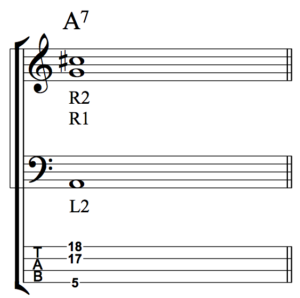
Now that we have the chord voicing figured out, we can start adding a simple triadic walking bass line in the LH (see. Fig. 2).
Instructions:
- Tap the LH bass line on its own until you can comfortable play it while counting aloud (i.e. “one, two, three, four).
- Combine both hands and count aloud while playing.
Fig. 2
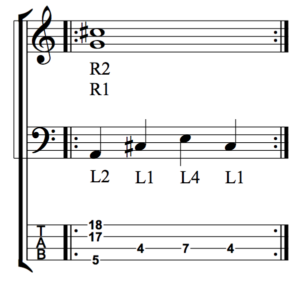
Now that we have a driving bass line in the LH it is time to add some rhythm to the RH. A very common rhythm in jazz, blues and rock n’ roll is called the “Charleston” (see Fig.3).
Instructions:
- Tap the new RH pattern on its own until you can comfortable play it while counting aloud (i.e. “one, two, three, four). Swing your 8th notes!
- Combine both hands and if this presents too much of a hurdle, divide the passage up into chunks (hint: hands are either together or separate) to master separately before consolidating into the full passage.
- Get comfortable to the point where you can count aloud while playing it.
Fig. 3
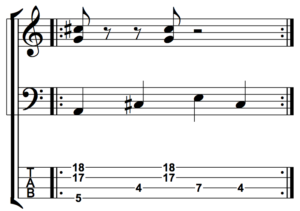
The “Charleston” is not always played on beats 1 and the and of 2, in fact it can be shifted to anywhere in the measure. Moving a rhythmic unit around is called “rhythmic displacement” and it is one of the best ways to work on your rhythmic independence (See Figures 4 and 5). This is a concept that I first learned from pianist Chris Donnelly.
Instructions:
- Clap the displaced RH rhythm in Fig.4 while counting aloud. Repeat for Fig.5.
- Write out all the other displacements (i.e. the “Charleston” starting on the and of 2, on 3 etc)
- Clap all those rhythms that you wrote out while counting aloud.
- Learn to tap all of the displaced “Charleston” rhythms with the RH while tapping the LH bass line. Furthermore, get comfortable enough to count simultaneously.
Fig. 4
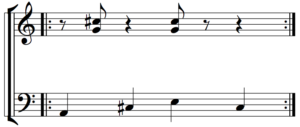
Fig. 5
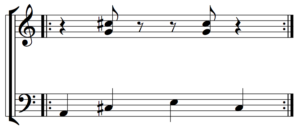
Now that you’ve gotten a handle of this concept, it’s not much of a leap to apply it to a 12-bar blues. I’ve included a short arrangement of a 12-bar blues in A that uses a Charleston rhythm in the RH and a walking bass line in the LH (see Fig. 6). Happy practicing!!
Fig. 6
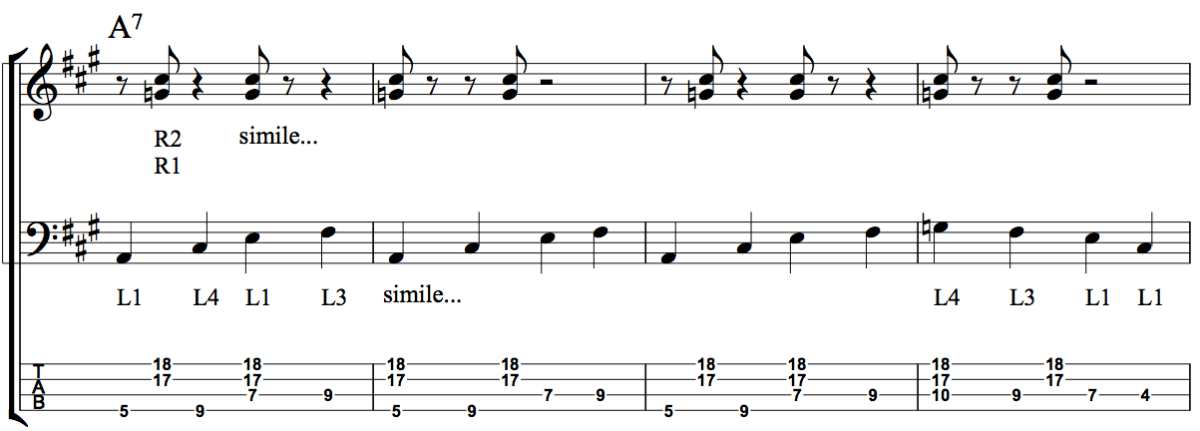
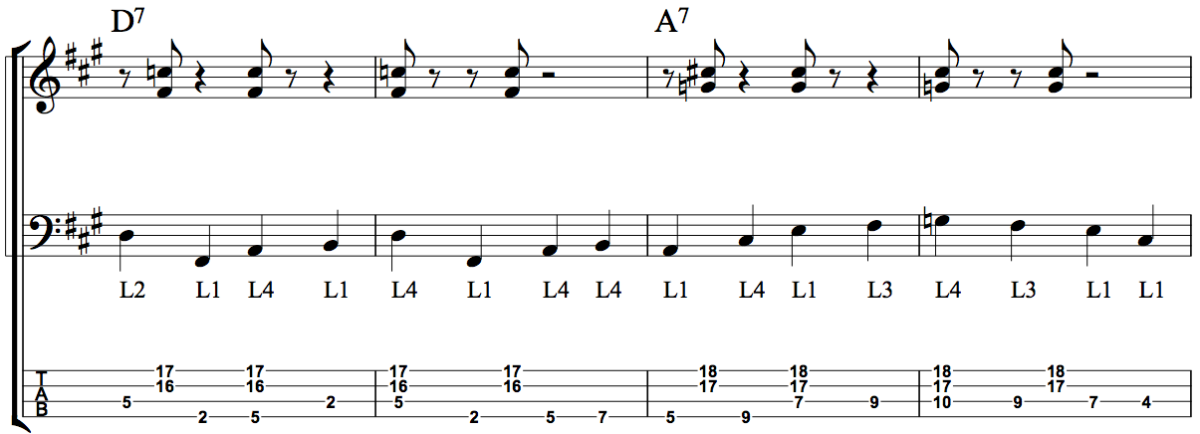
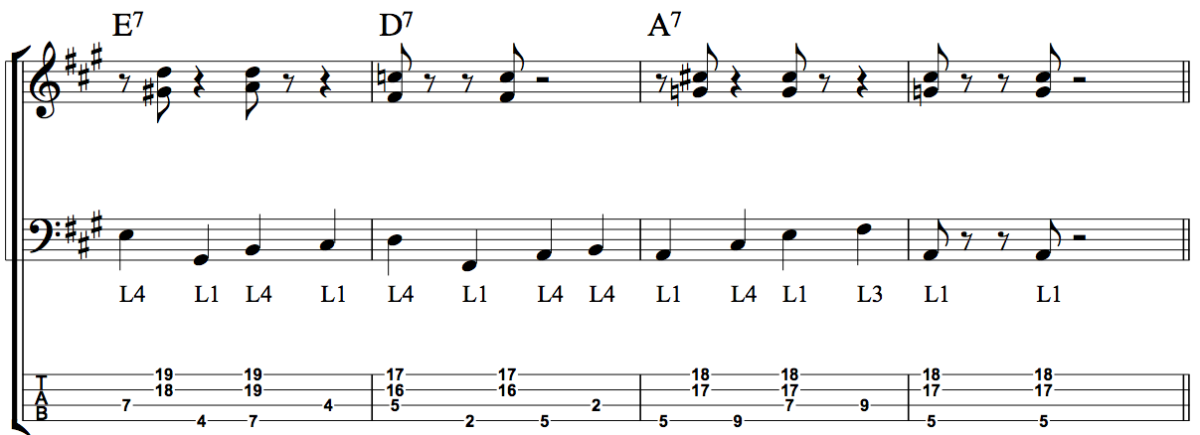
Josh Cohen is a multi-award winning six-string bassist, composer, session musician, and music educator. His solo six-string electric bass performances, which can be heard on his most recent 2020 album Freedom, use extended techniques to create the sound of an entire band with only one instrument without the aid of loop pedals. Josh has a new solo bass transcription book out and offers online music lessons.

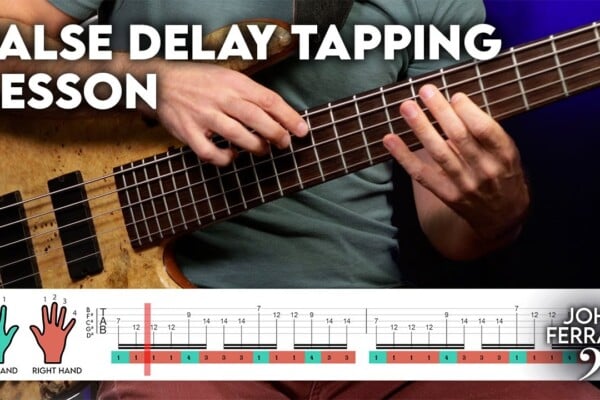
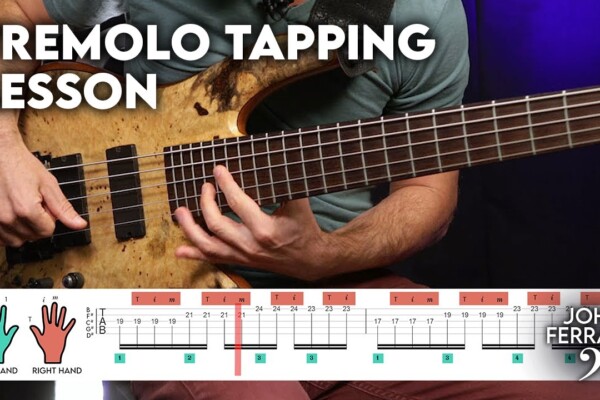

Man, you´re a great educator.
Thanks!